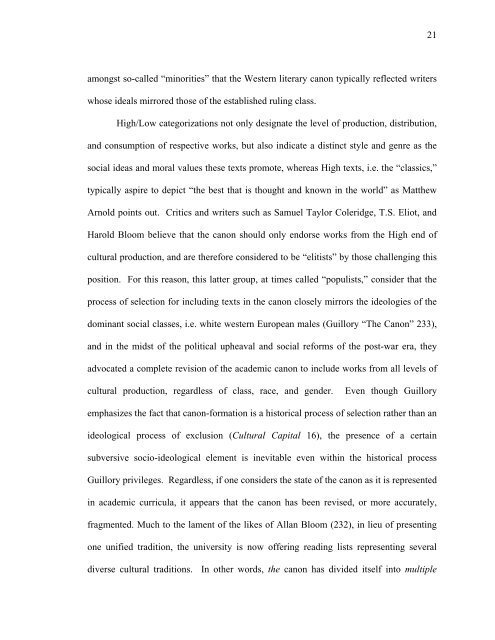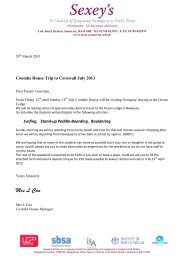Untitled - Sexey's School Moodle
Untitled - Sexey's School Moodle
Untitled - Sexey's School Moodle
Create successful ePaper yourself
Turn your PDF publications into a flip-book with our unique Google optimized e-Paper software.
amongst so-called “minorities” that the Western literary canon typically reflected writers<br />
whose ideals mirrored those of the established ruling class.<br />
High/Low categorizations not only designate the level of production, distribution,<br />
and consumption of respective works, but also indicate a distinct style and genre as the<br />
social ideas and moral values these texts promote, whereas High texts, i.e. the “classics,”<br />
typically aspire to depict “the best that is thought and known in the world” as Matthew<br />
Arnold points out. Critics and writers such as Samuel Taylor Coleridge, T.S. Eliot, and<br />
Harold Bloom believe that the canon should only endorse works from the High end of<br />
cultural production, and are therefore considered to be “elitists” by those challenging this<br />
position. For this reason, this latter group, at times called “populists,” consider that the<br />
process of selection for including texts in the canon closely mirrors the ideologies of the<br />
dominant social classes, i.e. white western European males (Guillory “The Canon” 233),<br />
and in the midst of the political upheaval and social reforms of the post-war era, they<br />
advocated a complete revision of the academic canon to include works from all levels of<br />
cultural production, regardless of class, race, and gender. Even though Guillory<br />
emphasizes the fact that canon-formation is a historical process of selection rather than an<br />
ideological process of exclusion (Cultural Capital 16), the presence of a certain<br />
subversive socio-ideological element is inevitable even within the historical process<br />
Guillory privileges. Regardless, if one considers the state of the canon as it is represented<br />
in academic curricula, it appears that the canon has been revised, or more accurately,<br />
fragmented. Much to the lament of the likes of Allan Bloom (232), in lieu of presenting<br />
one unified tradition, the university is now offering reading lists representing several<br />
diverse cultural traditions. In other words, the canon has divided itself into multiple<br />
21



